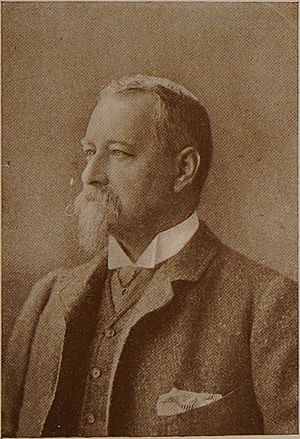William Alexander Kerr facts for kids
Quick facts for kids
William Alexander Kerr
|
|
|---|---|

Photograph by Lowestoft Broughton, c. 1904
|
|
| Born | 18 July 1831 Melrose, Scottish Borders |
| Died | 21 May 1919 (aged 87) Folkestone, Kent |
| Buried |
Cheriton Road Cemetery, Folkestone
|
| Allegiance | United Kingdom |
| Service/ |
Bombay Army |
| Years of service | 1849–1860 |
| Rank | Captain |
| Unit | 24th Bombay Native Infantry |
| Battles/wars | Indian Mutiny |
| Awards | Victoria Cross Mentioned in Despatches |
William Alexander Kerr was a brave Scottish soldier. He lived from 1831 to 1919. He received the Victoria Cross (VC). This is the highest award for bravery in battle. It is given to soldiers from Britain and Commonwealth countries.
Who Was William Alexander Kerr?
William Alexander Kerr was born on July 18, 1831, in Melrose, Scottish Borders, Scotland. He joined the army and served in the Bombay Army. This was part of the British forces in India. He became a lieutenant, which is an army officer rank.
A Heroic Act in India
In 1857, when Kerr was 25 years old, he was serving in India. There was a big uprising called the Indian Mutiny. On July 10, 1857, something very brave happened. It was near a town called Kolapore.
- Some soldiers who were rebelling had taken over a strong building. They were fighting very hard.
- Lieutenant Kerr was part of a group attacking this building.
- He saw that it was very important to capture the building quickly.
- He bravely rushed towards one of the gates.
- With some soldiers on foot, he broke down the gate.
- This allowed his group to get inside.
- Because of his daring action, the attack was a big success. The rebels were defeated.
This amazing act of bravery earned him the Victoria Cross. The Victoria Cross is given for incredible courage.
Later Life and Legacy
William Alexander Kerr went to school at Loretto School. After his brave actions, he was promoted to the rank of Captain. He lived a long life and passed away on May 21, 1919.
Today, you can see his Victoria Cross medal. It is on display at the Lord Ashcroft Gallery. This gallery is inside the Imperial War Museum in London. It helps people remember his courage.


